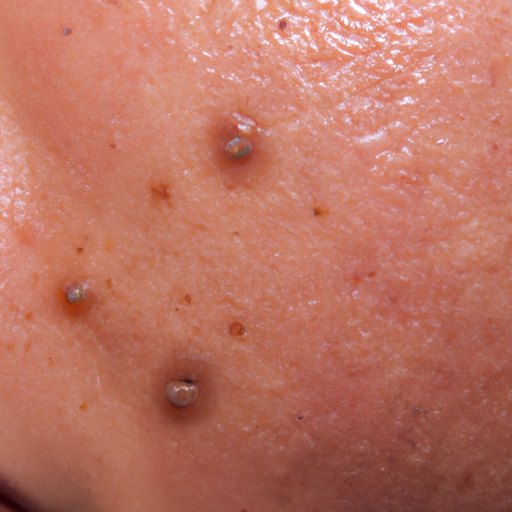Title: Unmasking Acne: A Comprehensive Guide to Diagnosis and Treatment
Acne, a common skin condition that affects millions worldwide, is often misunderstood and misdiagnosed. As an expert in dermatology, I aim to demystify this condition, providing a comprehensive guide to the diagnosis and treatment of acne.
Acne is characterized by the appearance of pimples, blackheads, whiteheads, and cysts, primarily on the face, chest, and back. It is most prevalent among teenagers due to hormonal changes during puberty, but it can affect individuals of all ages.
Diagnosing acne is typically straightforward. Dermatologists can usually identify the condition through a simple visual examination of the skin. However, it’s essential to differentiate between acne and other skin conditions like rosacea or folliculitis that may present similar symptoms.
The severity of acne can vary significantly from person to person. Mild acne may consist of a few blemishes, while severe acne can lead to numerous inflamed nodules and cysts that can cause scarring. Accurate diagnosis is crucial as it determines the appropriate treatment approach.
When it comes to treating acne, there’s no one-size-fits-all solution. Treatment plans are tailored to the individual’s specific needs and may involve a combination of topical treatments, oral medications, and lifestyle modifications.
Topical treatments are often the first line of defense against acne. These include over-the-counter products containing salicylic acid or benzoyl peroxide, which help to unclog pores and reduce inflammation. Prescription topical treatments such as retinoids and antibiotics may be used for more severe or persistent cases.
Oral medications are typically reserved for moderate to severe acne or when topical treatments aren’t effective. These can include antibiotics to reduce inflammation and kill bacteria, hormonal therapies for women, and isotretinoin for severe or resistant cases.
In addition to medical treatments, lifestyle modifications can also play a crucial role in managing acne. This includes maintaining a healthy diet, regular exercise, adequate hydration, and a consistent skincare routine. It’s also important to avoid picking or squeezing pimples, which can lead to scarring and further inflammation.
While these treatments can significantly improve acne, it’s important to remember that results may not be immediate. Patience is key, as it can take several weeks to months to see improvement. Regular follow-ups with your dermatologist are also essential to monitor progress and adjust treatment as necessary.
In recent years, advances in technology have led to new treatment options for acne, including light and laser therapies. These treatments work by reducing oil production and killing acne-causing bacteria, providing another option for those who haven’t responded to traditional treatments.
In conclusion, acne is a complex condition that requires a comprehensive approach to diagnosis and treatment. By understanding the nature of this condition and the various treatment options available, individuals suffering from acne can take proactive steps towards clearer, healthier skin.
Remember, if you’re struggling with acne, it’s important to consult a dermatologist. They can provide a proper diagnosis and guide you towards the most effective treatment plan for your specific needs. Don’t let acne mask your confidence; take control of your skin health today.
Keywords: Acne, Diagnosis, Treatment, Dermatology, Skin Condition, Topical Treatments, Oral Medications, Lifestyle Modifications, Light and Laser Therapies.




